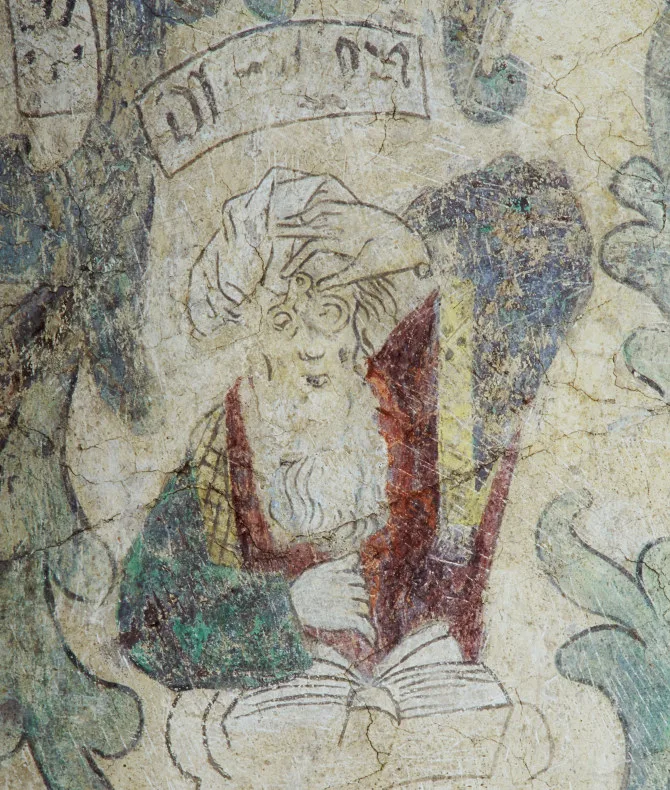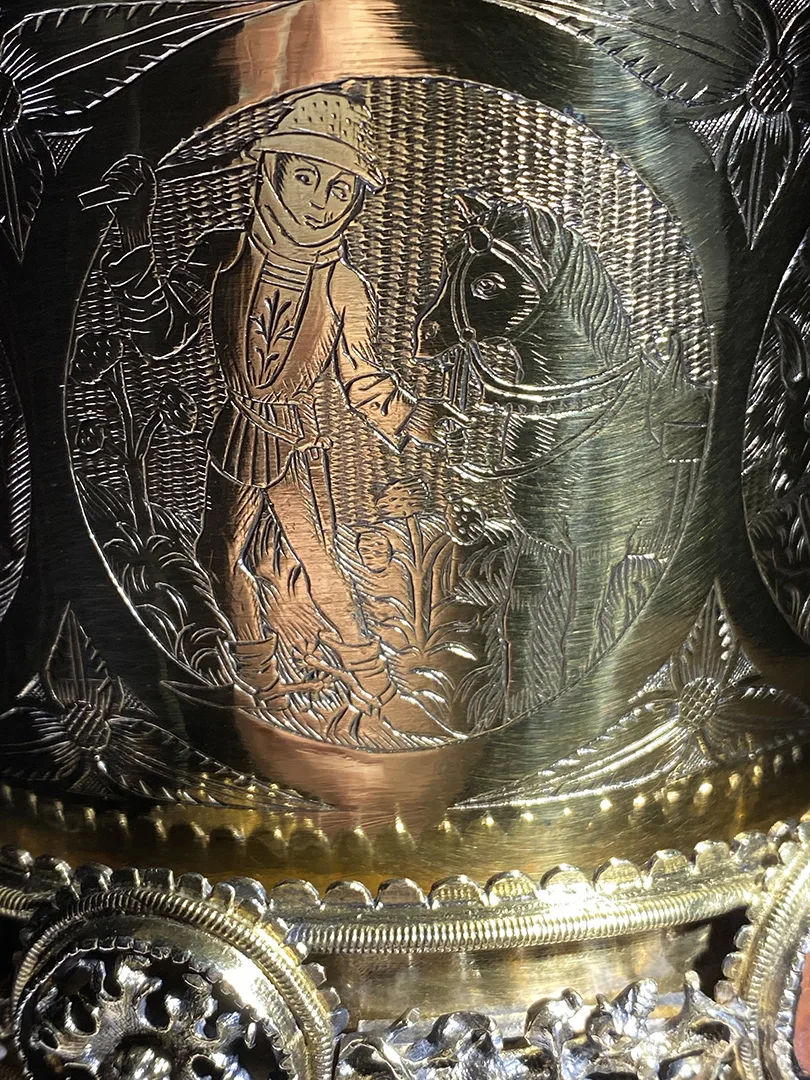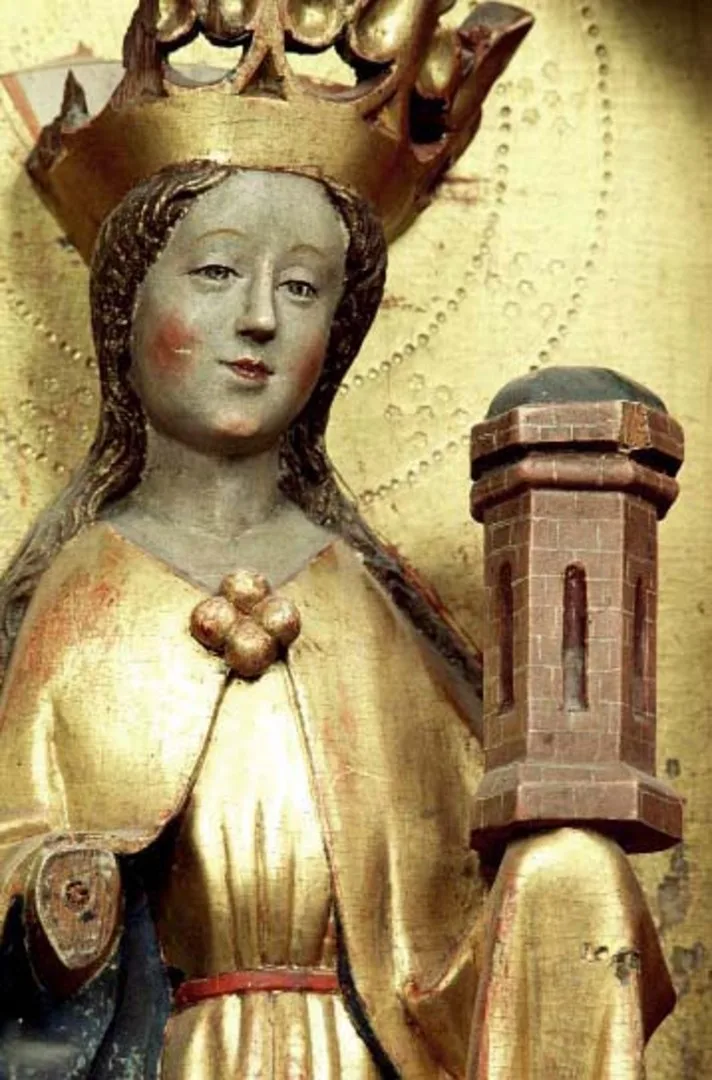Medieval saint: Anna
Viking Age
AD 800 – AD 1100
Middle Ages
AD 1050 – AD 1520
Modern Age
AD 1520 – AD 2025
Saints occupied an important role in medieval Sweden. They served as moral exemplars and as intermediaries who conveyed human prayers to God – a function that they continue to perform within the Catholic Church. Representations of Saint Anne became widespread in the later Middle Ages, appearing in altarpieces as well as in textiles, liturgical objects, and even on domestic items.

The life of Anne
The Bible itself contains no reference to Anne, but a legend concerning her is recorded as early as the second century in an apocryphal text known as the Protoevangelium of James. According to this account, Anne was born in Bethlehem and later lived in Nazareth with her husband Joachim. Although wealthy and devout, Anne was distressed at her inability to conceive.
She prayed to God, vowing that if she bore a child, she would dedicate it to divine service. An angel appeared and foretold that she would give birth to a special daughter, Mary. When Mary was three years old, Anne and Joachim brought her to the Temple in Jerusalem, where she was to be raised in piety. Anne’s story closely parallels that of Hannah in the Old Testament, who was childless until she conceived the prophet Samuel.
Depictions of Saint Anne
In medieval art, Saint Anne is typically represented standing or seated, holding a small figure of Mary, who in turn carries the infant Christ. This iconographic type is known as Anna Selbdritt (“Anne herself the third”), emphasising three generations within a single composition. Anne is usually portrayed as a married woman, with her hair and chin veiled, while Mary, as a virgin, may appear with her hair uncovered.
The collections of the Swedish History Museum include a sculpture of Anne preserved in a saint’s shrine from the early 15th century, originally from Västra Ed Church in Småland. The shrine was produced in Lübeck, in present-day Germany, which during the Middle Ages was a major artistic centre for Sweden.

Altarpiece
Saint Anne depicted in an altarpiece from Västra Ed church, Småland.
Towards the end of the fifteenth century, depictions of Anne became more naturalistic. Mother, daughter, and grandson were shown on the same scale. An example is an altarpiece from Hägerstad Church in Östergötland, manufactured in northern Germany at the end of the century.
Here Anne sits beside Mary, who holds the Christ Child, while four men stand behind them. Behind Mary is her husband Joseph, and behind Anne are three figures identified as her husbands: Joachim, father of Mary, together with Cleophas and Salome, fathers of Mary’s sisters Mary Cleophas and Mary Salome. These characters do not appear in the canonical Gospels but are mentioned in the Protoevangelium of James and in the Legenda Aurea, a medieval collection of saints’ lives.
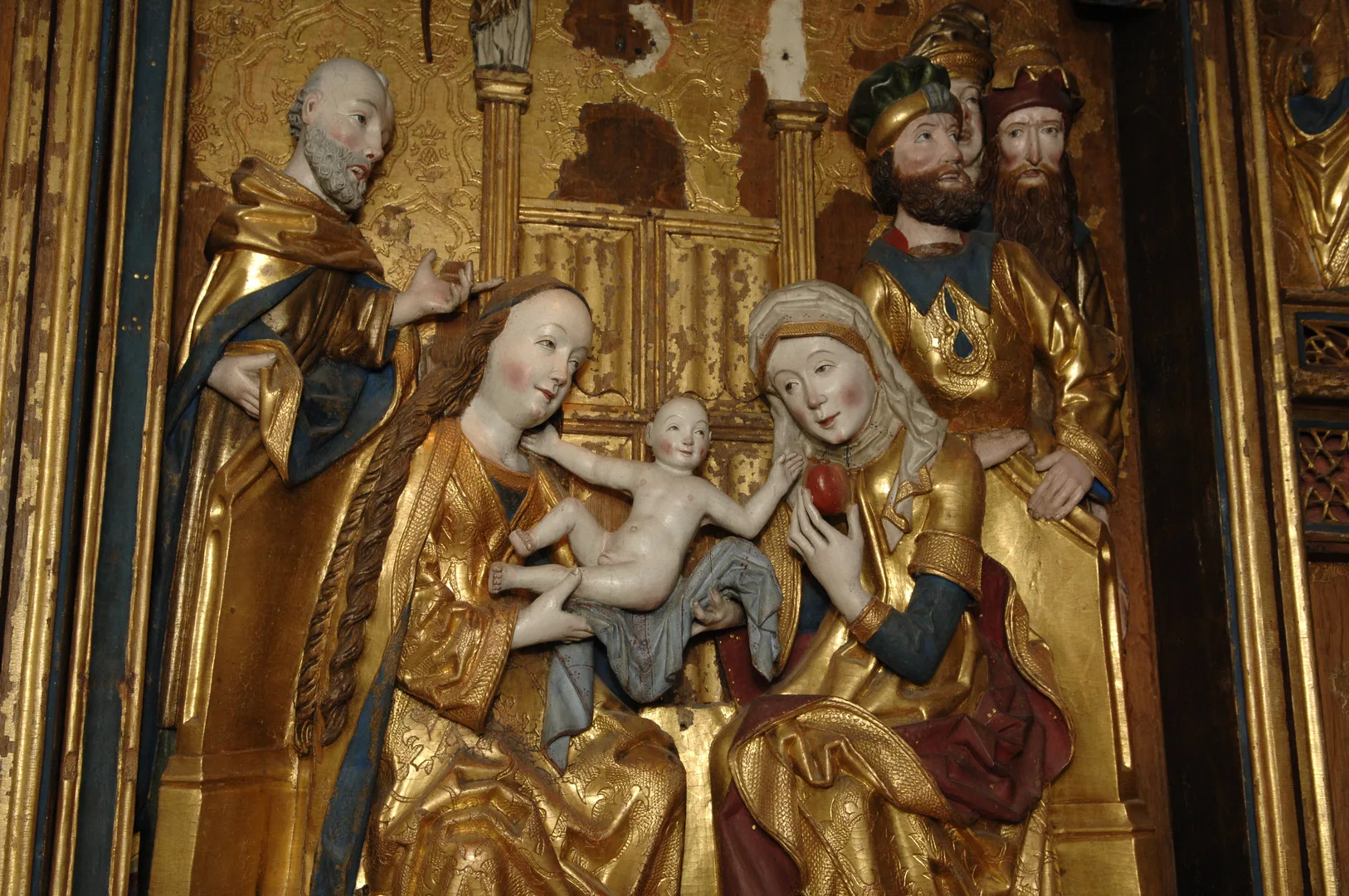
Altarpiece
From Hägerstad church, Östergötland.
On view at Historiska museet in the exhibition Medeltida konst
This type of representation is known as the Holy Kinship. The number of family members included varies, and in some depictions the extended family appears in considerable detail. One such example is an embroidered cross from the late Middle Ages, originating from Hille Church in Gästrikland, which shows Mary Cleophas and Mary Salome each holding a child. Five of Jesus’s cousins were said to have become his disciples as adults.
Another, more elaborate example is the Fogdö Hanging, a fifteenth-century embroidery in split stitch probably produced at Vårfruberga Abbey near Strängnäs.
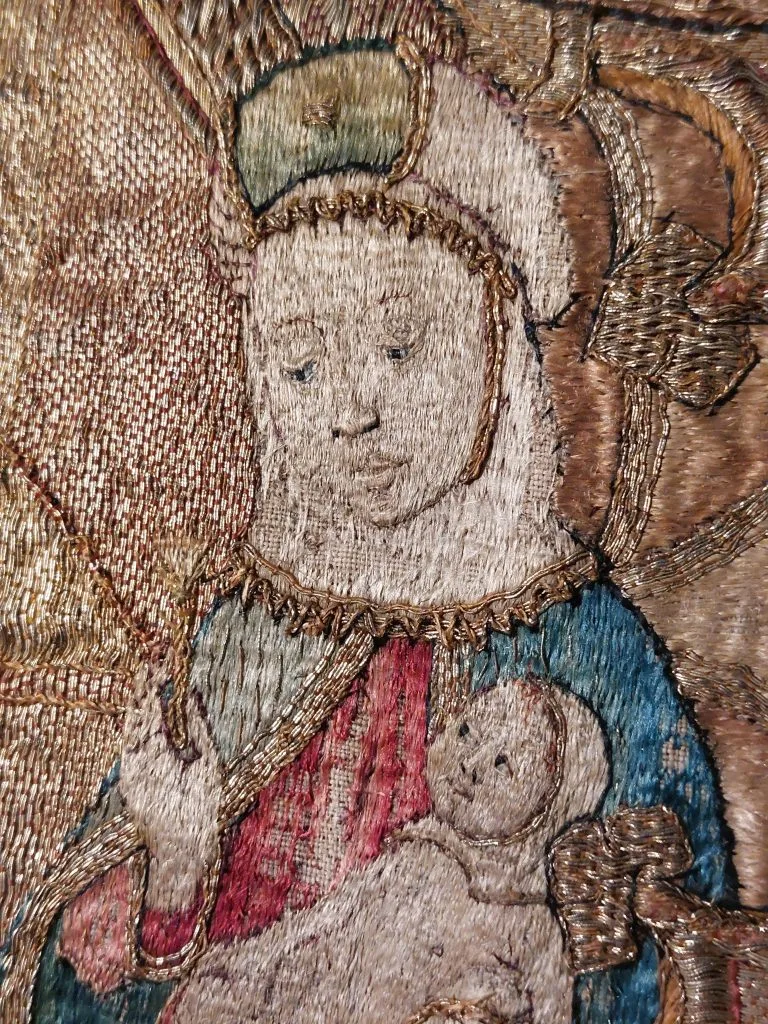
In an altarpiece from around 1500, originally in Sånga Church in Ångermanland, Anne, Mary and Jesus are flanked by Saints Bernard and Benedict. The saints are painted on the interior of the shrine doors, while the exterior surfaces depict scenes from the childhood of Mary. When the shrine was restored in 1942, a pilgrim badge was found concealed in the base moulding. Cast in lead, it originated from Trondheim and bore the image of Saint Olaf. It may have been placed there as a votive offering by a pilgrim seeking Saint Anne’s intercession.
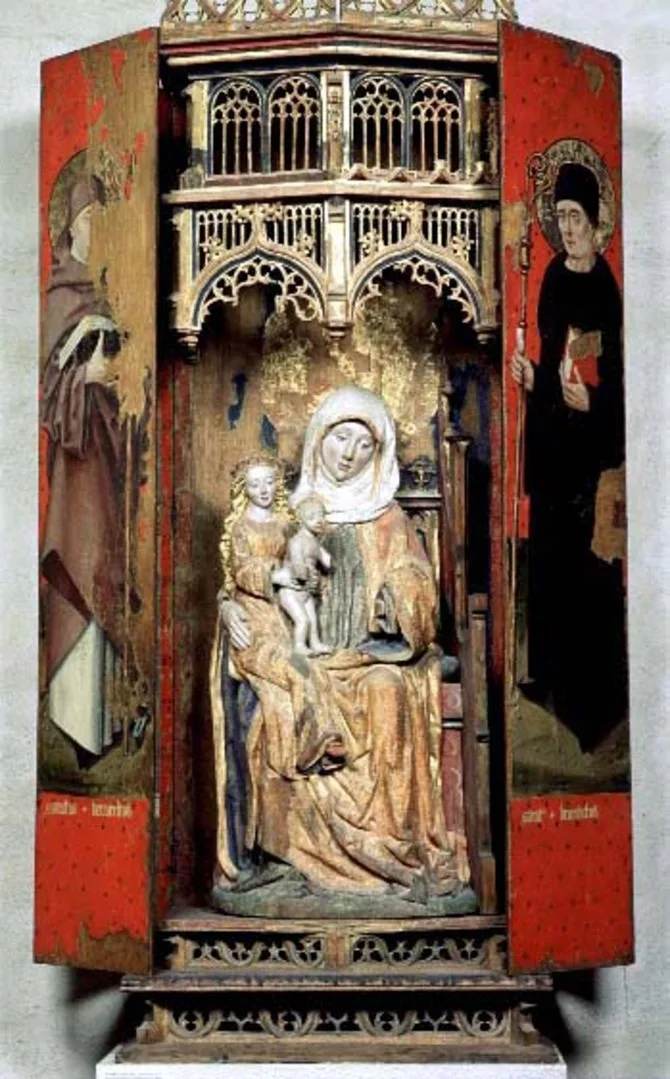
Altarpiece
From Sånga, Ångermanland.
On view at Historiska museet in the exhibition Medeltida konst
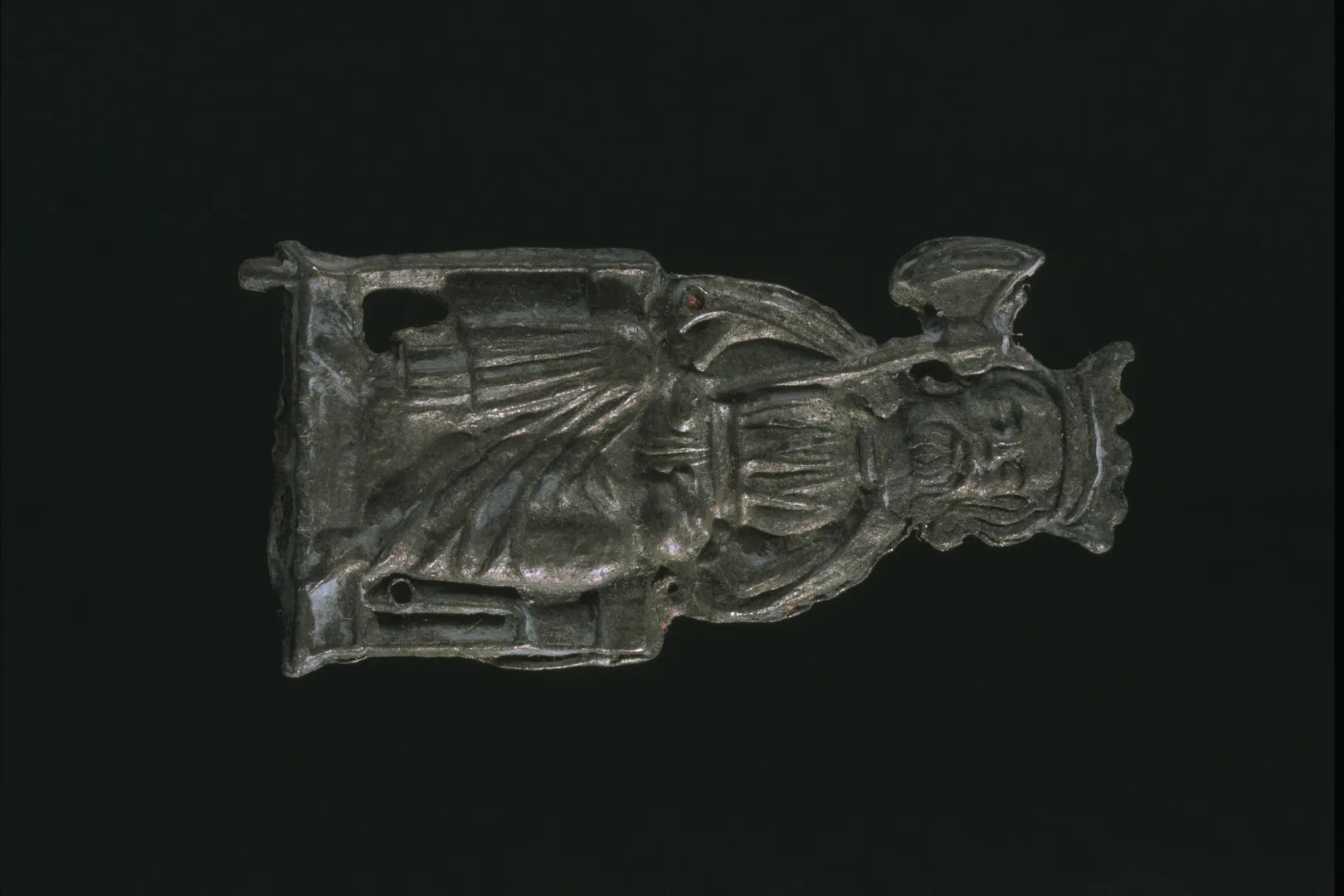
Lead pilgrim's badge
From Trondheim, depicting Saint Olaf.
On view at Historiska museet in the exhibition Sveriges historia
Saint Ann, mother of Mary, ewas commemorated in the medieval liturgical calendar on 9 December, a date that continues to be observed in Sweden as Anna’s name day.
